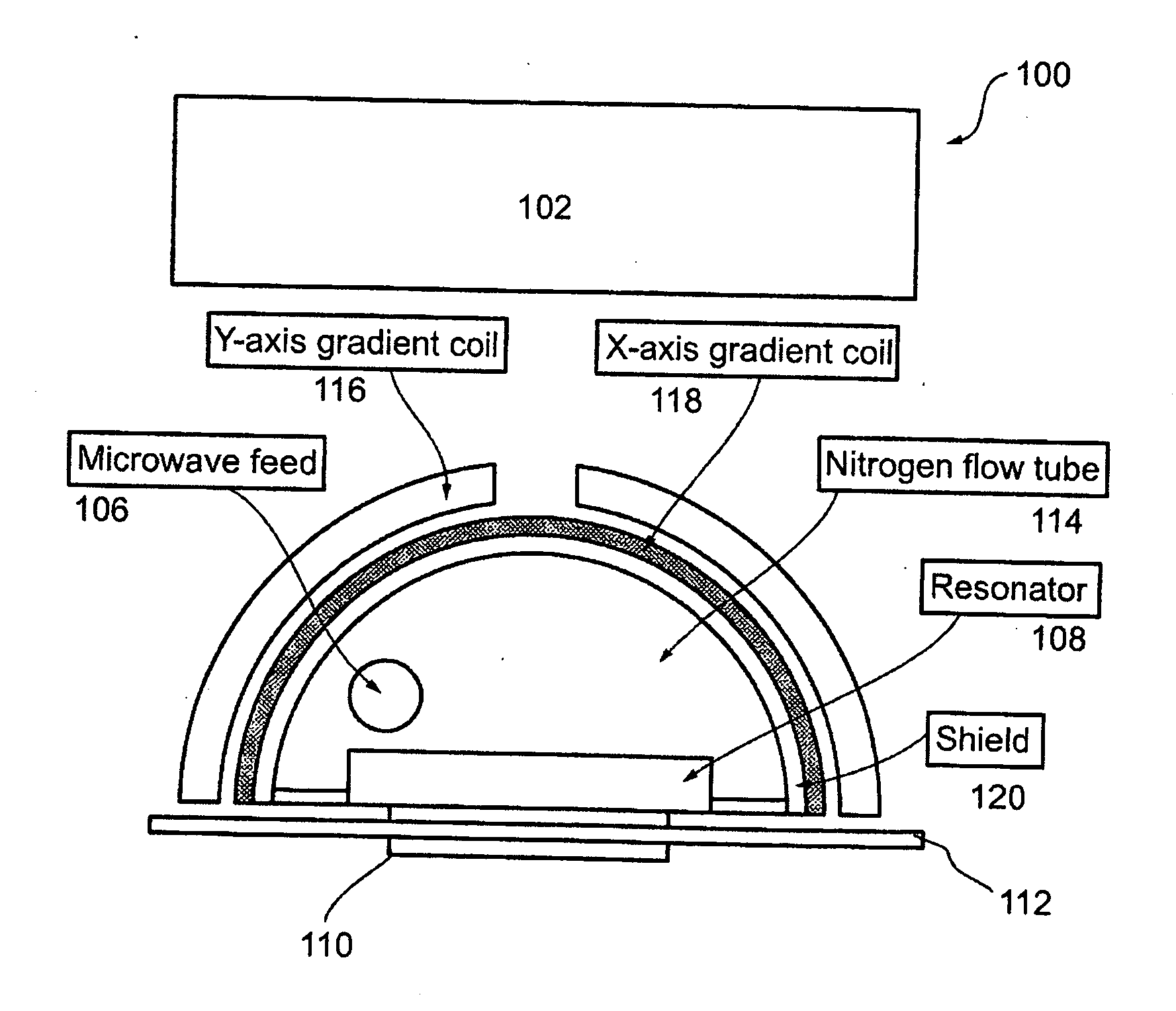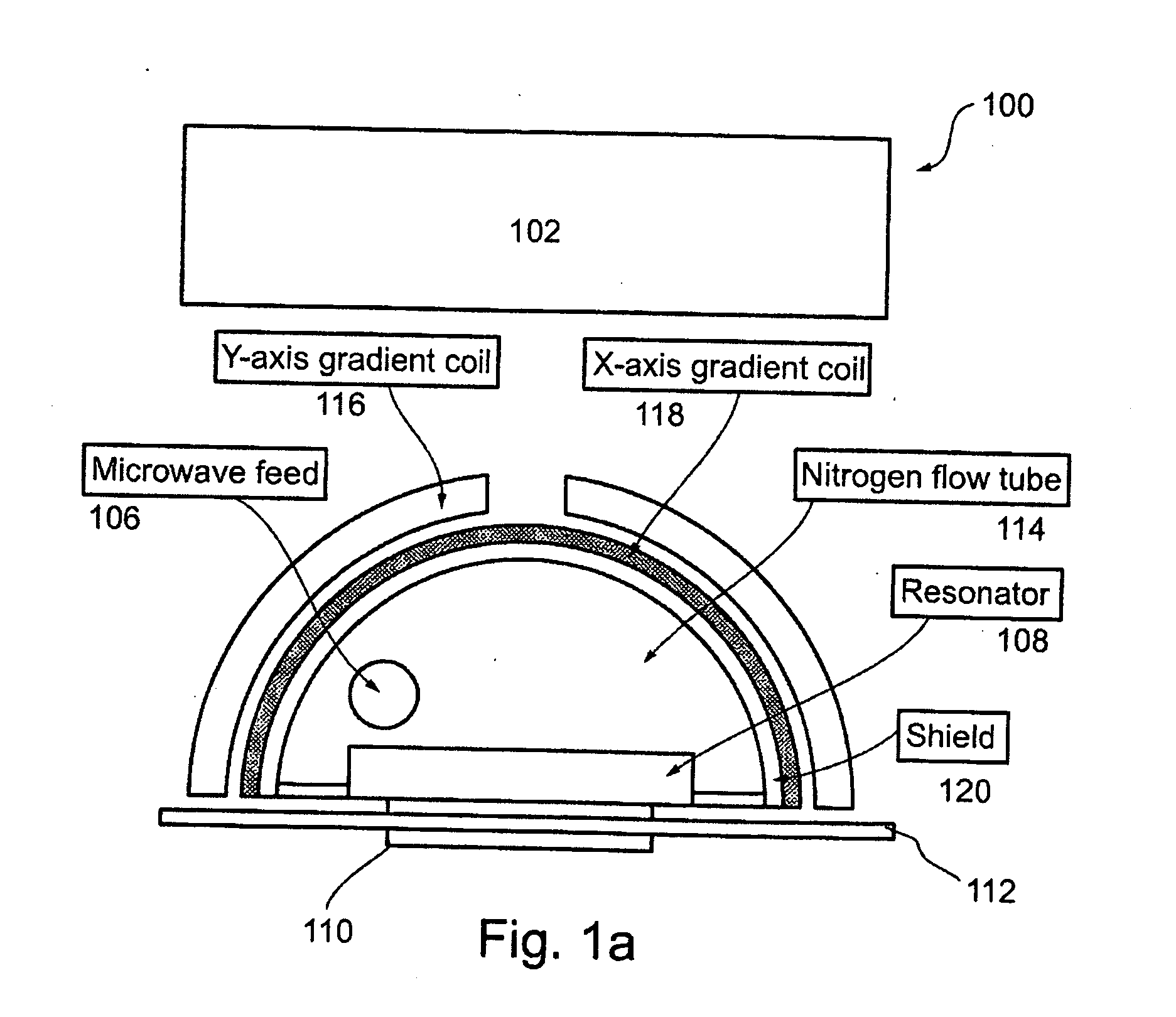Probe and system for electron spin resonance imaging
a technology of electron spin resonance and probe, which is applied in the field of esr imaging, can solve the problems of limiting the size of the specimen, requiring a large device, and needing to insert the specimen into the imaging device, so as to improve the permittivity and quality factor, and improve the sensitivity of the resonator
- Summary
- Abstract
- Description
- Claims
- Application Information
AI Technical Summary
Benefits of technology
Problems solved by technology
Method used
Image
Examples
Embodiment Construction
[0040]In the following description subtitles are provided to ease the reading of the detailed description, however, these subtitles are not intended to limit the interpretation of the terms used herein, or to provide basis for interpreting any term.
[0041]FIG. 1A is a schematic illustration of a cross-section in an ESR imaging probe 100 according to an exemplary embodiment of the invention. FIG. 1B is an isometric view of a similar probe, not comprising the permanent magnet. In this embodiment, the static magnetic field is provided by a source that does not form part of the probe.
[0042]Probe 100 comprises a permanent magnet 102, a microwave feed 106, a resonator 108, and a connection (see line going from k to g and from there g to c in FIG. 4) to a processing unit (c in FIG. 4).
[0043]In an exemplary embodiment of the invention, probe 100 is provided as an integral unit, with magnet 102 attached to the other probe parts as to move with them. In this embodiment, a scan of specimen may ...
PUM
 Login to View More
Login to View More Abstract
Description
Claims
Application Information
 Login to View More
Login to View More - R&D
- Intellectual Property
- Life Sciences
- Materials
- Tech Scout
- Unparalleled Data Quality
- Higher Quality Content
- 60% Fewer Hallucinations
Browse by: Latest US Patents, China's latest patents, Technical Efficacy Thesaurus, Application Domain, Technology Topic, Popular Technical Reports.
© 2025 PatSnap. All rights reserved.Legal|Privacy policy|Modern Slavery Act Transparency Statement|Sitemap|About US| Contact US: help@patsnap.com



